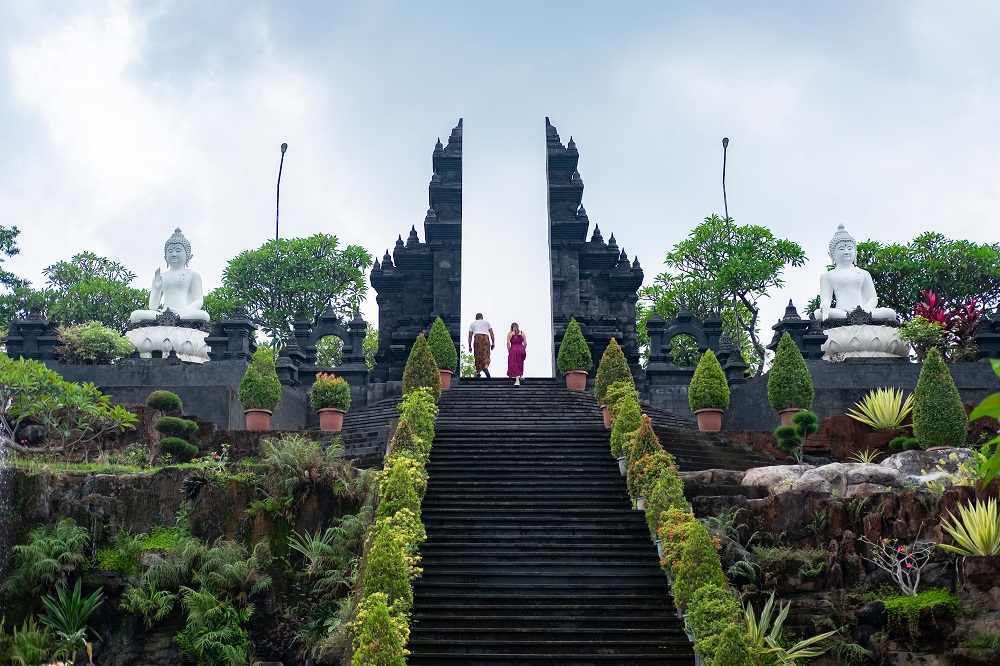
Bali’s vast geographical landscape has no limits when it comes to exploring. From the bustling south, the majestic mountains of the east to the wilderness of the west. However, despite once being the gateway to the island, the north Bali coastline seems the least journeyed and explored, and many wonder if north Bali is worth visiting. That is unequivocal ‘yes’ in our books, and here we will share why, as we explore the many things to do in north Bali outside of the usual Lovina Beach visits.
North Bali holds a significant role in the island’s history as it is home to the great port town of Singaraja, the capital and centre of Buleleng Regency, which covers an extensive area with the second largest population on the island.
It isn’t obvious today, but the north once had the best harbour, the island’s busiest port prior to the development of the south. It was the primary entryway to Bali during the Dutch colonial era, and so Singaraja’s historical significance merits an extensive delving into. Before Denpasar, Singaraja was the Dutch colonial capital of Bali and the Lesser Sunda Islands from 1849 until 1960.
This port town background has made Singaraja a melting pot of culture, having one of the most diverse populations in Bali. Here, you’ll find evidence of this in-migration of cultures, including a Chinese temple in the old harbour area, a majestic Buddhist temple monastery high in the hills, and remnants of old Dutch colonial buildings, among other pieces of the past.
Embarking on a journey to the north, we pass through the winding roads of the Bedugul highlands. The approximately two-hour drive to the north is now a breeze, thanks to the broad and newly built ‘shortcut’ roads that cut into the mountainside and have you gliding down now the north-facing slopes.
The time-capsule
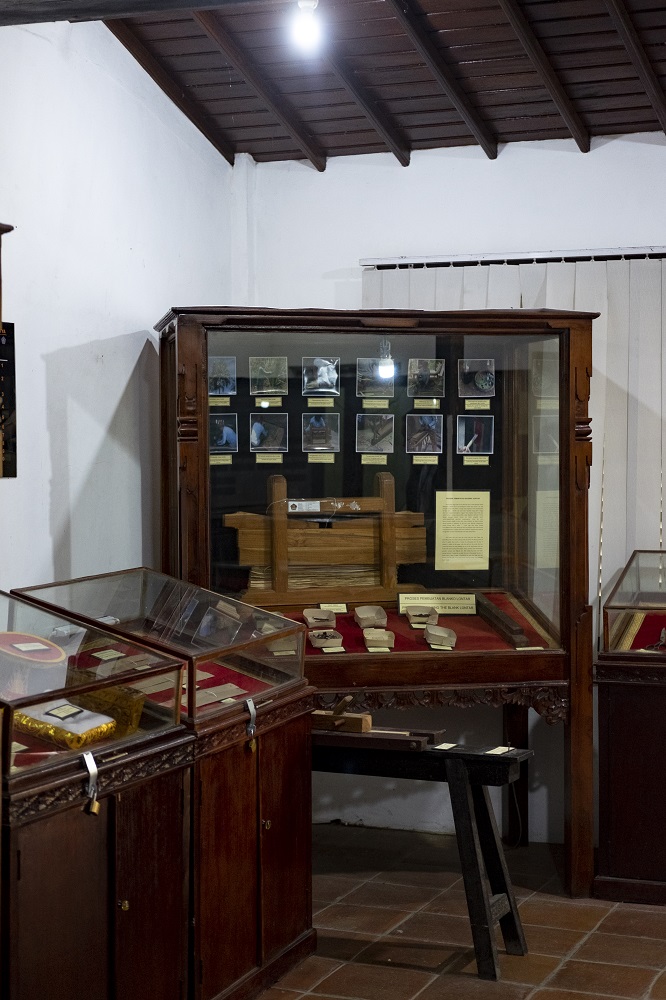
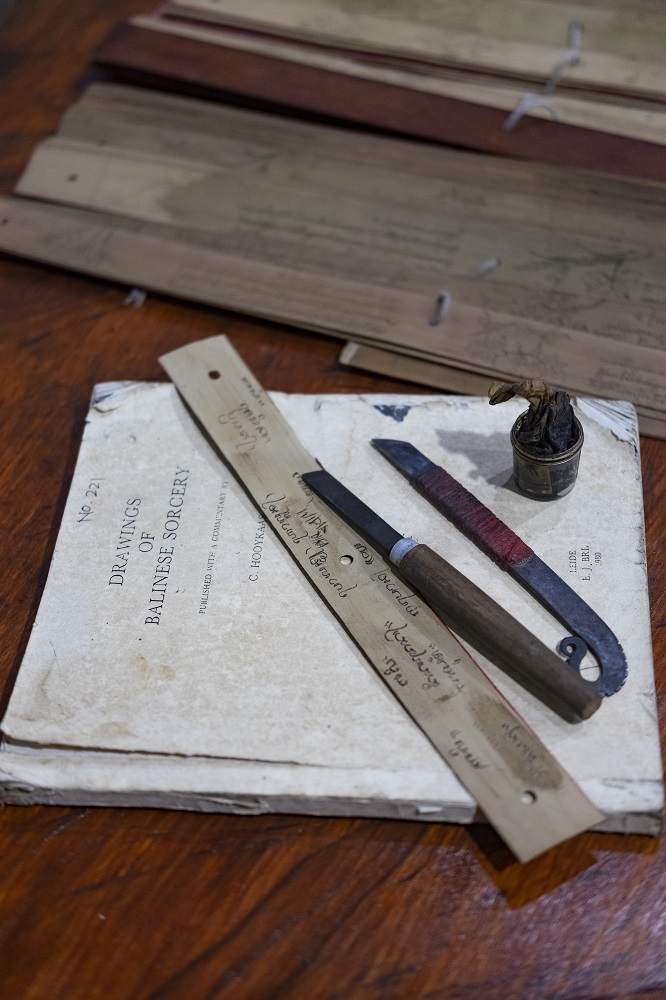
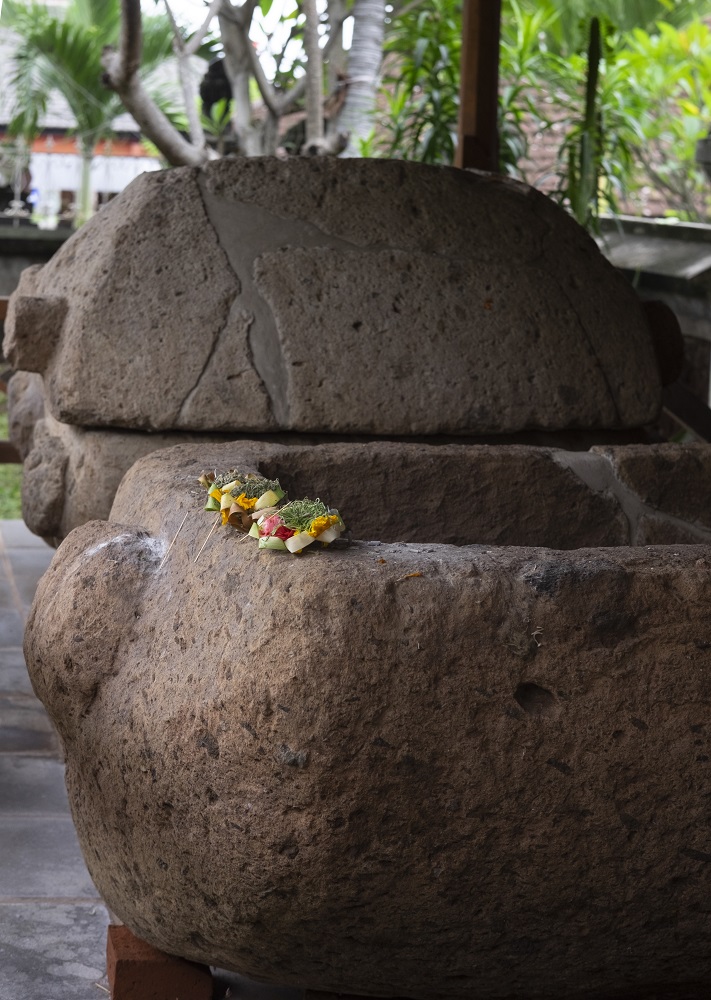
Entering Singaraja, the city feels very much like you’ve been transported back to Bali in the 80s, where the city oozes a classic Balinese charm compared to the now gentrified south. Our first stop is one of the most historical places in the area located in the city centre, Gedong Kirtya and Museum Buleleng, located within the Pura Seni Sasana Budaya Singaraja complex.
Gedong Kirtya is one of the first lontar museums in Bali, a historical institution that preserves a collection of ancient Balinese palm-leaf manuscripts. Established in 1928, the museum was initially built as a library during the Dutch colonial era. Then named “Kirtya Lefrink – Van der Tuuk”, it was founded by several notable figures, namely F.A Liefrinck and Dr. Van Der Tuuk, two pioneers of research on Balinese culture, customs and language.
Recognising its potential to be a tourist destination, the former regent of Buleleng decided to upgrade it into a full museum in 2008. The museum currently houses over 2,000 ancient lontar, “prasasti” (transcriptions on copper plates), books and manuscripts, which include documents from the colonial period. The building itself preserves the allure of its old colonial style, wherein in the first room you’ll find various items displayed such as materials and tools to make lontar.
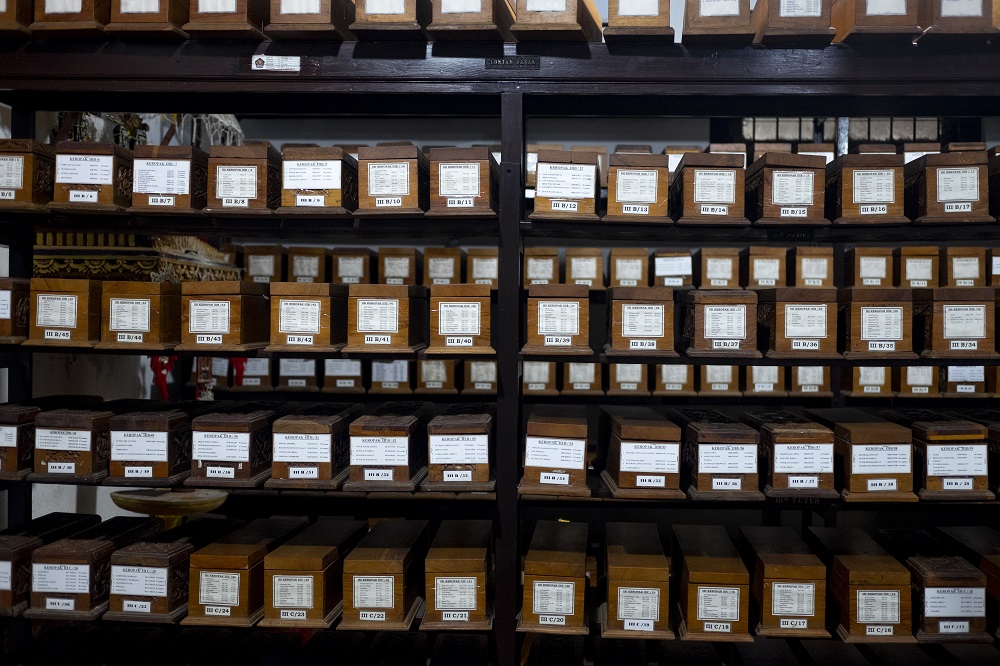
In the archive room is where you’ll find the lontar collection, which covers various information about human life such as religion, philosophy, genealogy, black magic, architecture, and “usada” (medicine manuscripts).
In the same complex lies Museum Buleleng, which was established in 2001. Although the museum seems somewhat underwhelming for a building that houses important historical items, the collection inside the museum makes up for what it lacks in presentation. Inside, you’ll discover ancient artefacts including statues, weapons, sarcophagi, personal belongings and family items of the past King of Buleleng, Ki Gusti Anglurah Pandji Sakti. The venue also showcases various donations from the royal family, paintings, fabrics, gold and silver crafts, as well as objects used in the daily life of the locals including farming and fishing tools. Most intriguing are the artefacts of a pre-historic time, dating back to the island’s palaeolithic and neolithic eras, like stone arrowheads and copper pots.
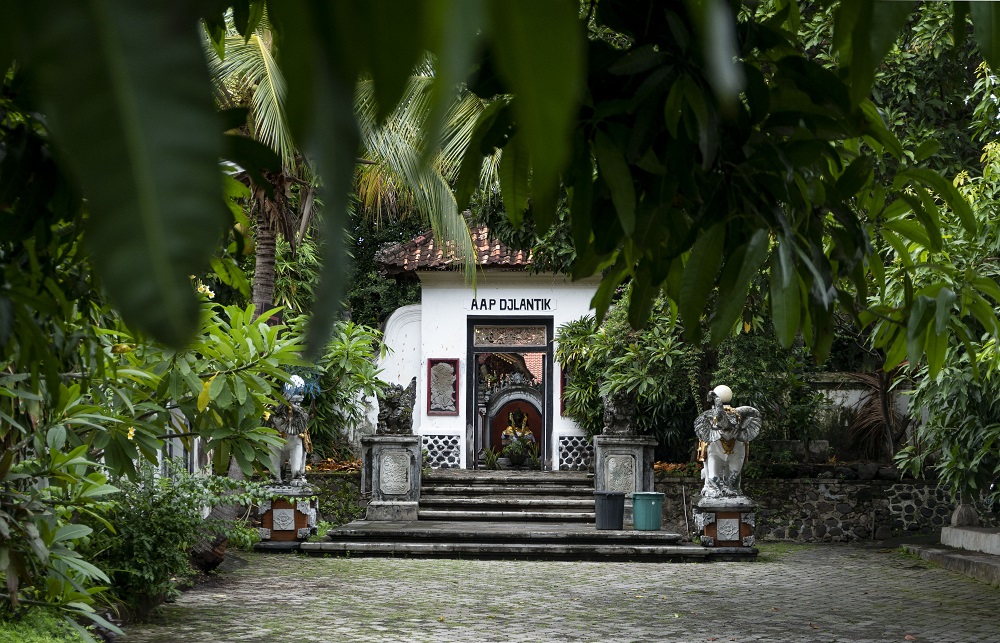
A short walk around the corner of the complex is Puri Agung Singaraja (Royal Palace of Singaraja), home of the royal family which was built in 1604. To this day, descendants of the last king of Buleleng still reside in the palace, which is open to visitors keen to learn the history of the palace.
Temples and their tales
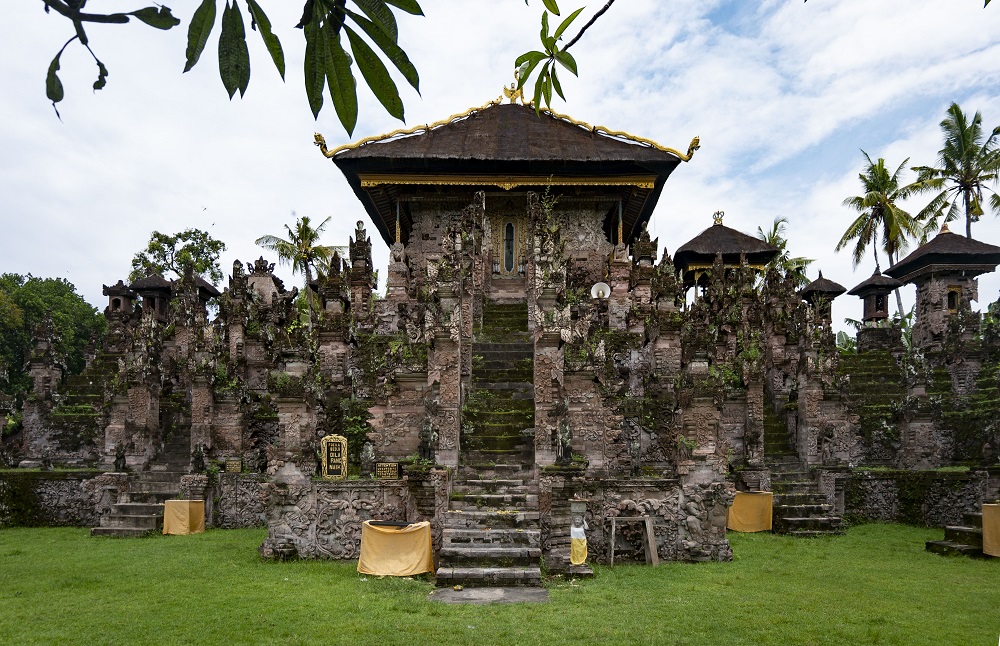
Driving east of Singaraja, one will find Pura Beji located in the village of Sangsit. This Balinese temple dates back to the 15th century, with the arrival of Brahmins from the Javanese-Hindu Majapahit Kingdom. Dedicated to Dewi Sri, the Balinese Hindu Goddess of rice and fertility, the temple is highly revered by farmers around the area. The architecture of Pura Beji showcases the style of northern Balinese temples; their façades and reliefs are far more intricately carved than those found in the south. The relief panels are embellished with carvings of vines and flowers as if the stone foliage was growing upon the temple itself; faces of demons, dragons and gods protrude as if trying to pry themselves free.
The carvings on the temple also feature colour, another aspect that makes north Bali temples distinct. A unique feature that stands out in this temple is the aling-aling, a barrier structure intended to repel evil spirits, featuring a carved figure of two Dutchmen playing stringed instruments.
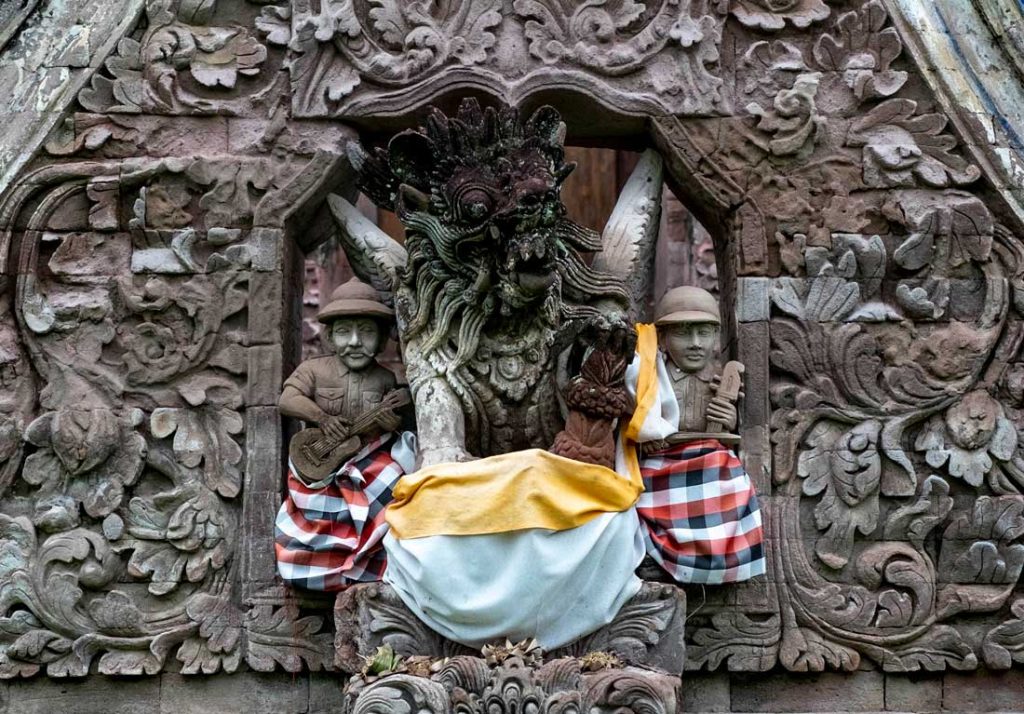
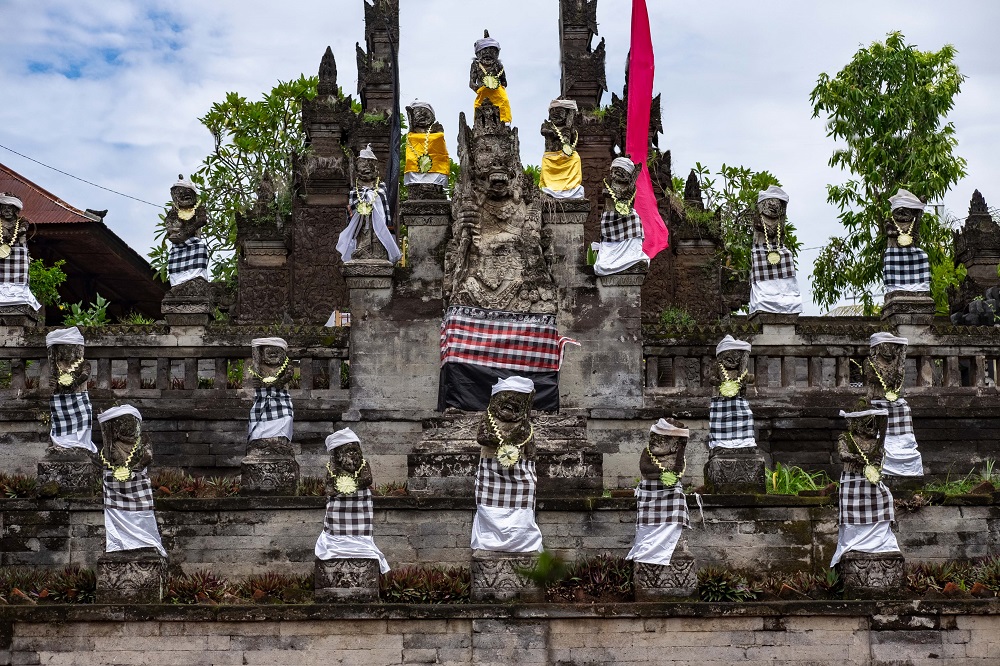
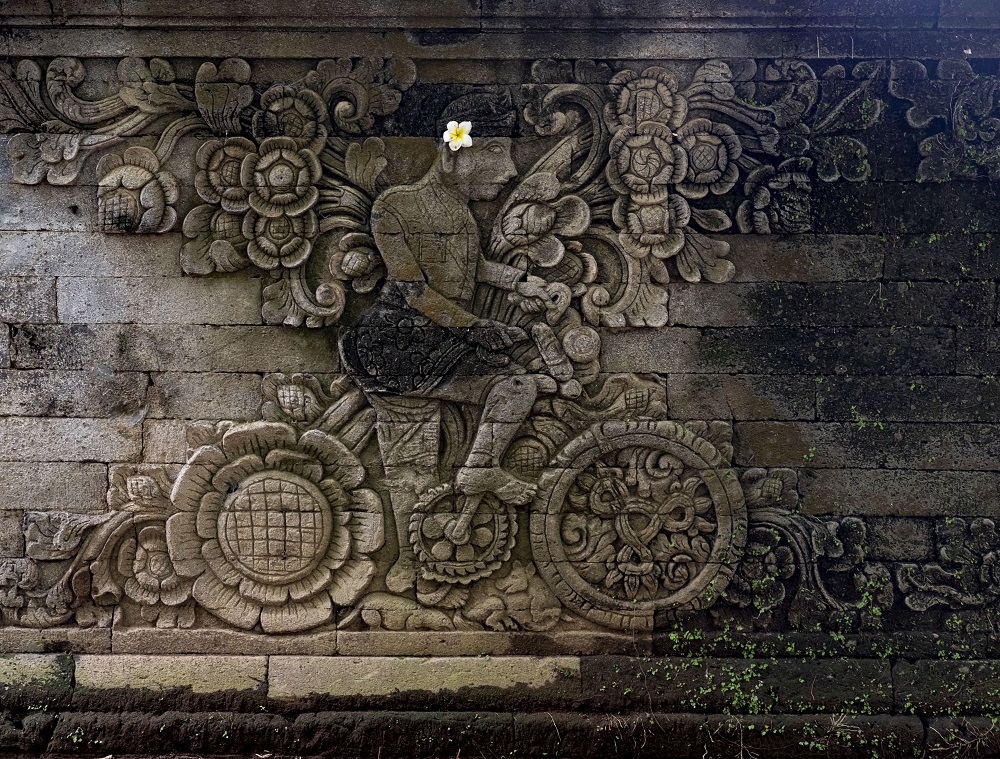
Another interesting temple nearby is Pura Maduwe Karang, regarded as one of the principal temples in Bali. During our visit, the temple had been decorated in preparation for a purnama (full moon) ceremony in the coming days and was bursting with colour. At its entrance, 36 stone figures representing characters from the Ramayana epic stand guard.
Built in 1890, this temple is dedicated to Batara Maduwe Karang, “lord possessing the ground”, a god that offers protection to the fertility of agricultural land. Featuring three terraced sanctums, the most sacred inner sanctum feature the main shrine at the centre, Betara Luhur Ing Angkasa, flanked by two shrines to its left and right, one dedicated to Ratu Ayu Sari, a manifestation of mother earth, and the other dedicated to Ratu Ngurah Sari, protector of the produce of the earth.
What makes this temple stand out is its peculiar carving on the side of the temple of a Dutch man riding a bicycle, said to be a depiction of Dutch artist W.O.J. Nieuwenkamp who explored Bali on his bicycle in 1904 (the first bicycle ever on the island!)
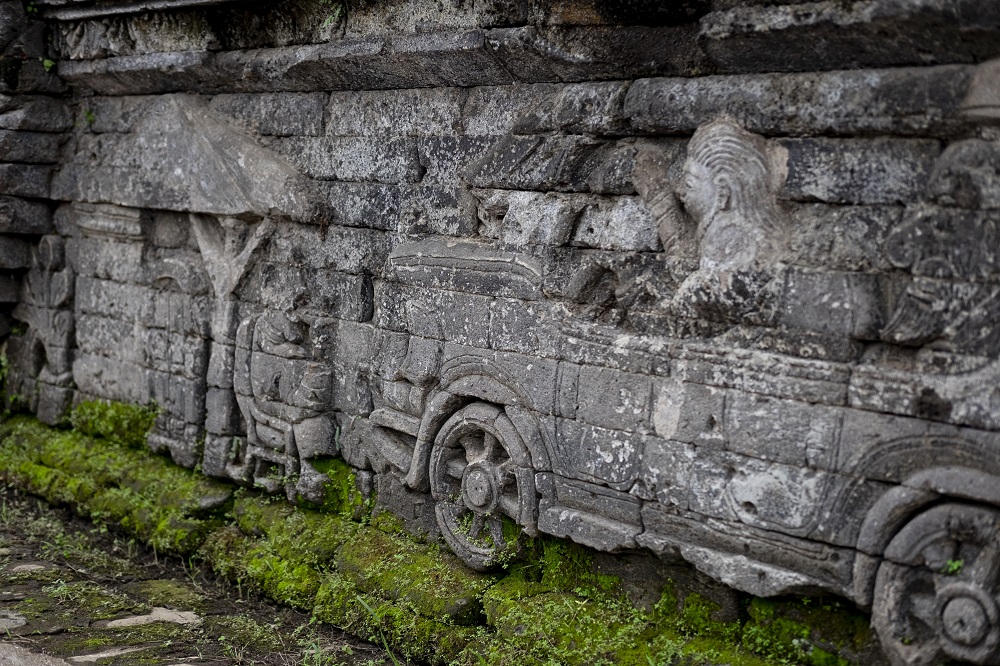
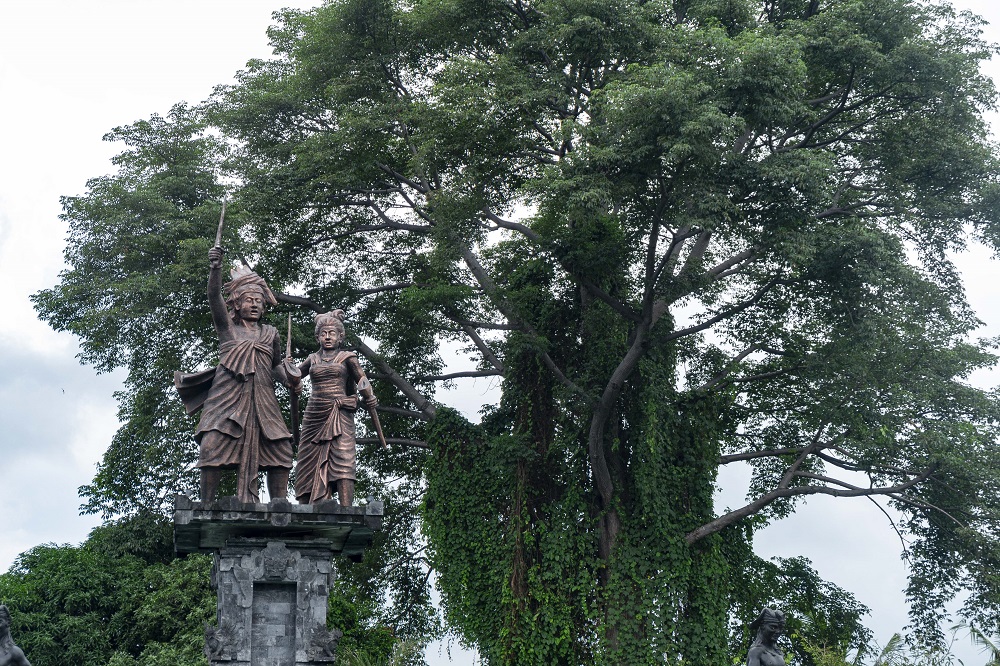
Next, we visited Pura Dalem Jagaraga located in Jagaraga Village, Sawan District. This temple holds a historical significance as it witnessed the struggle of the Balinese people against the Dutch invaders in 1849, a war that is famously known as “Puputan Jagaraga”. The temple’s unique ornaments feature carvings that depict the life of the Balinese before and after the arrival of the Dutch. You’ll find carvings of ancient cars, aeroplanes, ships under attack by sea monsters and figures in Balinese folklore.
Across from the temple is the Jagaraga Monument, built in 2016 as a tribute to the “Puputan” war featuring a 15-metre monument of I Gusti Ketut Jelantik and Jero Jempiring, two figures who played an integral role in the war against the Dutch.
Cruising the north Bali coastline
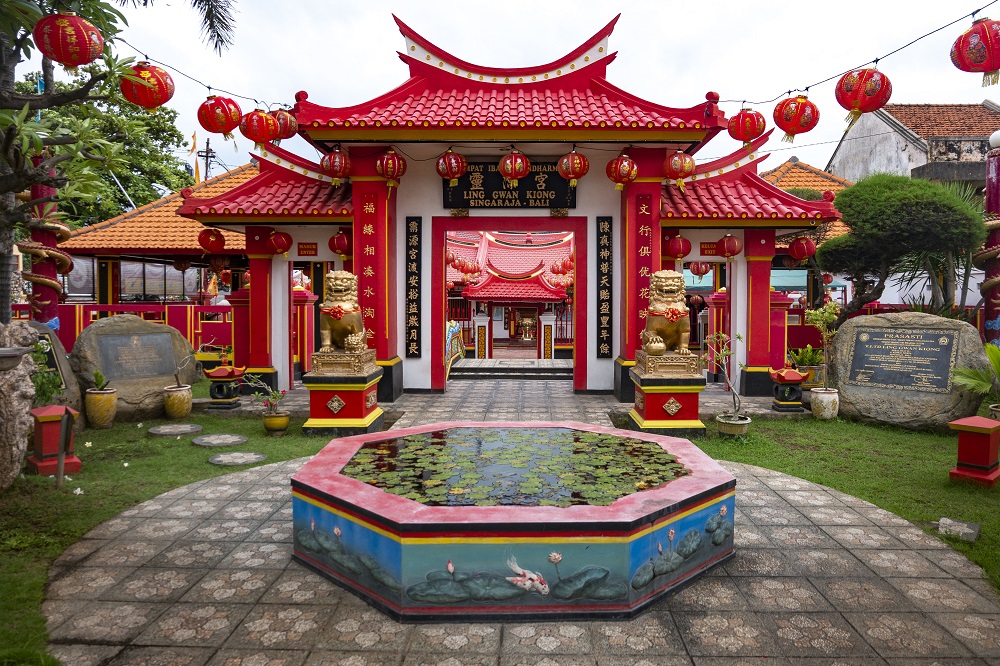
We then visited the old harbour of Singaraja, which has become a tourist destination for both local and foreign visitors. During its heyday, it was the largest harbour, a place for trade as well as stopovers for foreign ships — not much of this past can be seen today, sadly, as the area has been refurbished and the pier used for local dining venues.
One interesting site in the harbour area is Klenteng Ling Kwang Kiong, an ancient Chinese temple that was built in 1873. A place of worship for Tri Dharma followers, namely the Taoist, Confucian and Buddhist religious communities. This impeccable temple features gardens and murals outside, whilst a pagoda with an ornamental bridge hovers over a lotus pond, leading you to the main temple with hand-painted wooden gates depicting Chinese deities.
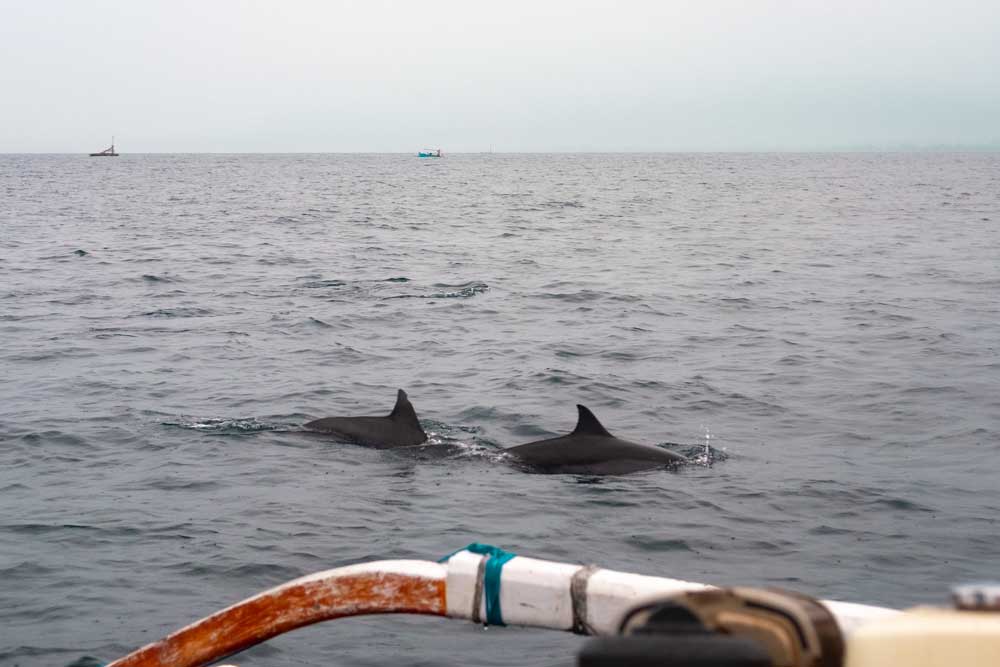
Another highlight along the coast is Lovina Beach. The most touristy area of north Bali, the Lovina area is lined with beachfront resorts and little eateries, with tourists lured by the tranquil black sand beach. It resembles what Kuta might have been 30-odd years ago.
Of course, Lovina is most well-known for its dolphin watching, as droves of jukung boats bring tourists at sunrise to catch these majestic marine mammals as they swim and leap across the waves. This is certainly a memorable activity, but on busy periods it gets overcrowded and loses its pleasure. Lucky for us — and thanks to our accommodation, Mayo Resort — we took a boat out further west in Seririt, and found that the dancing dolphins were just as prevalent here, allowing us to witness (and swim alongside) them in peace.
The monastery in the mountains
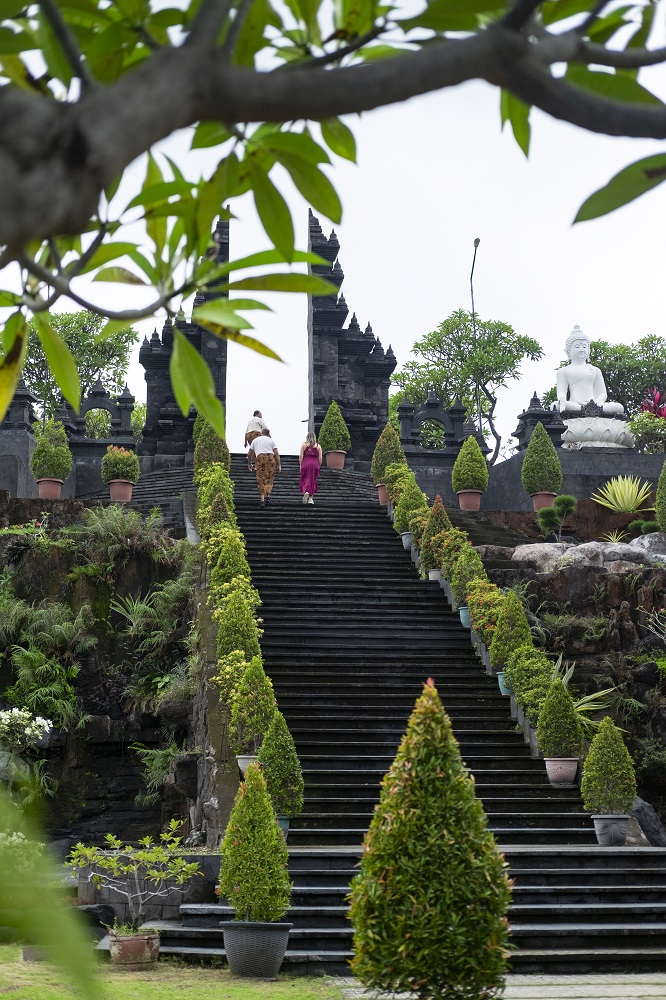
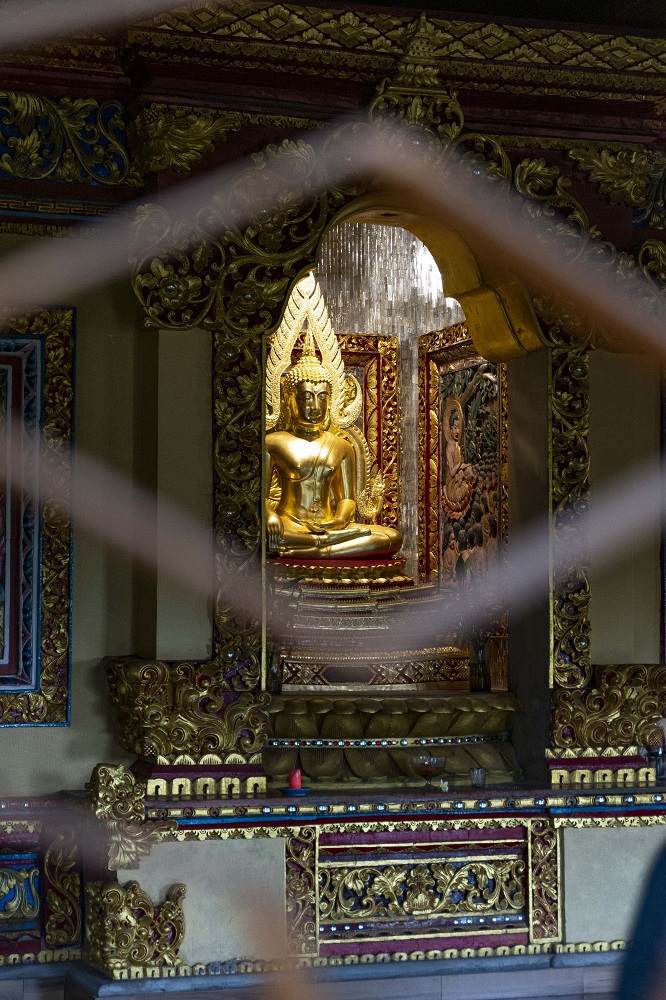
Having explored the coast, it was time to venture into the interior. Up into the mountains of the Banjar District is visit Brahmavihara-Arama, a majestic Buddhist Temple Monastery. Completed in 1969, it is the largest Buddhist monastery in Bali, though it features Hindu influences in its architecture.
Entering the monastery, a towering statue of Buddha stands at the centre of a lotus pond to welcome; behind it, an expansive and peaceful complex, a hive of temples and pagodas, connected by gardens and stairways. This exemplary monastery houses several buildings including the Dharmasala (a study room) and the Uposatha Gara (a place of worship). A grand flight of stairs take you to the highest point of the monastery, where a replica of the Borobudur Temple stands amidst a large garden. An air of peace seems to have settled above the compound, which stands high above the surrounding jungled ravine, with views out to the distant coast.
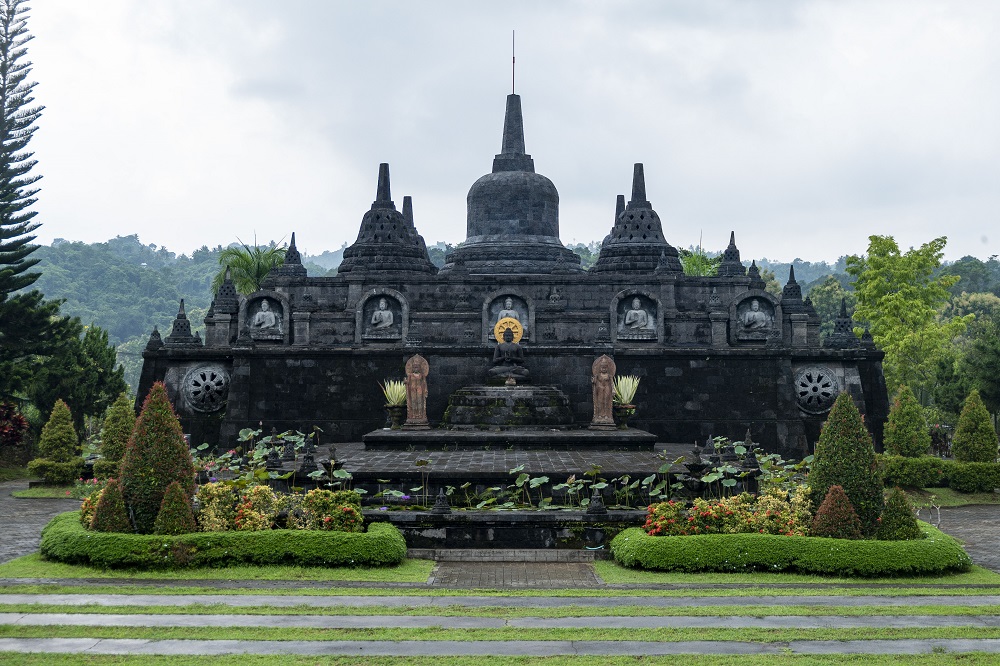
But a few minutes from the Brahmavihara-Arama is another little sanctuary. In the depths of one of the valleys, a rural alcove in the northern highlands is the Banjar Hot Spring complex. This steamy oasis invites you to soak and unwind in three naturally heated pools, surrounded by trees and mountainside. A luxury after a day of exploration.

For a little extra adventure on this side of the island — best visited on your journey to or from the north — is an expedition to the waterfalls of Sambangan. Now, many know of Aling-Aling waterfall, but that is just one of many in the verdant jungle ravine found in Sambangan village.
With a total of eight waterfalls, the Sambangan is the ultimate destination for adventure-seekers and nature-lovers, where a mixture of experiences await— from trekking the surrounding area to dipping in lagoon pools and jumping or sliding down waterfalls.
This gorgeous ravine is honestly like a fairytale wonderland, up the river, the towering Aling-Aling fall cascades 35-metres down a cliff face, a majestic sight from deep inside the gorge. Its waters — and other streams that trickle down the almost Jurassic river valley — continue to flow down to three other falls: Kroya, where you can jump off a 5-metre drop into the natural pool, or slide down its rocky face; then down to Kembar, where a 10-metre cliff jump tests your spirit; and finally, Pucuk, where only the bravest dare to leap off the 16-metre platform down to a little oasis, a peaceful pool of cool mountain water, surrounded by untouched forest.
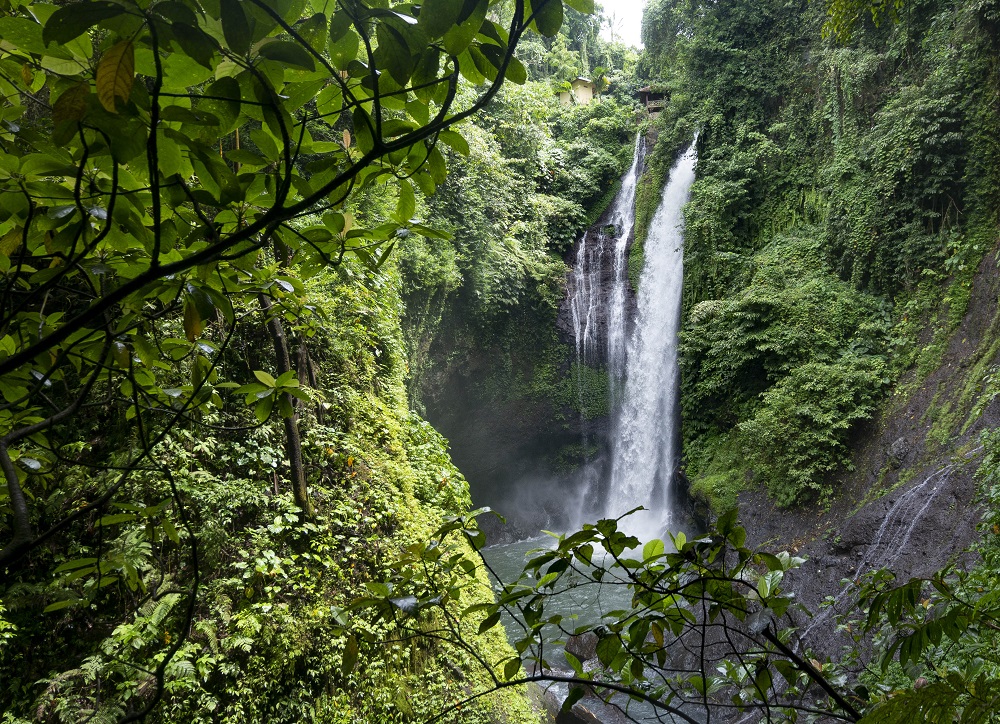
Offering a myriad of historical and cultural destinations, and leisurely activities amidst its awe-inspiring nature and vast landscape, Bali’s northern coast deserves more recognition as an area that needs to be explored by those visiting and living in Bali. It is a fascinating destination for those interested in history, culture and nature.
Of course, there is more to the area, but this shows the rich variety the northern region has to offer visitors, inviting people to make their own north Bali tours and explorations.
Looking for where to stay in north Bali? The boutique beachfront accommodation, Mayo Resort, welcomes guests into their cosy nook on the island’s northern coastline.










